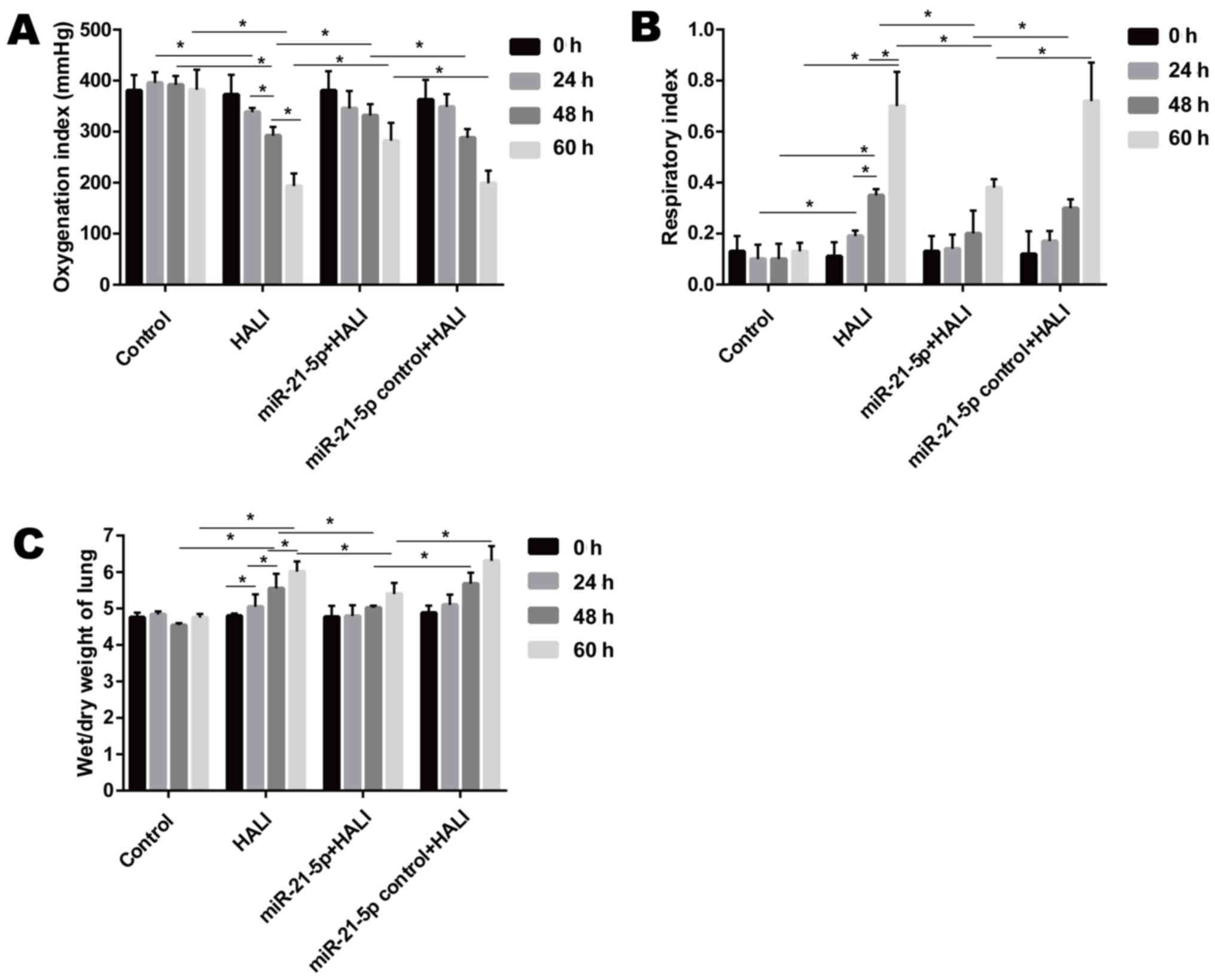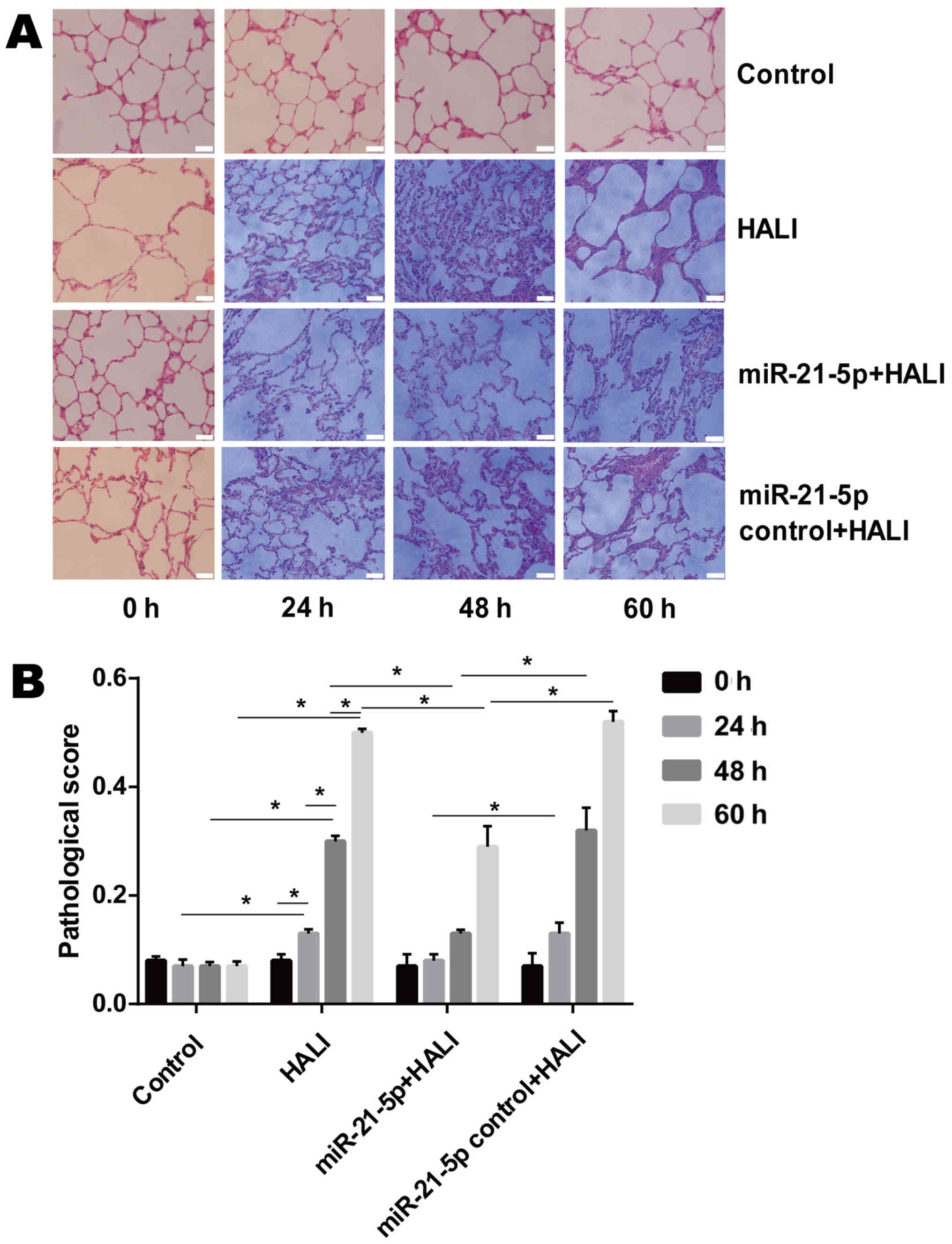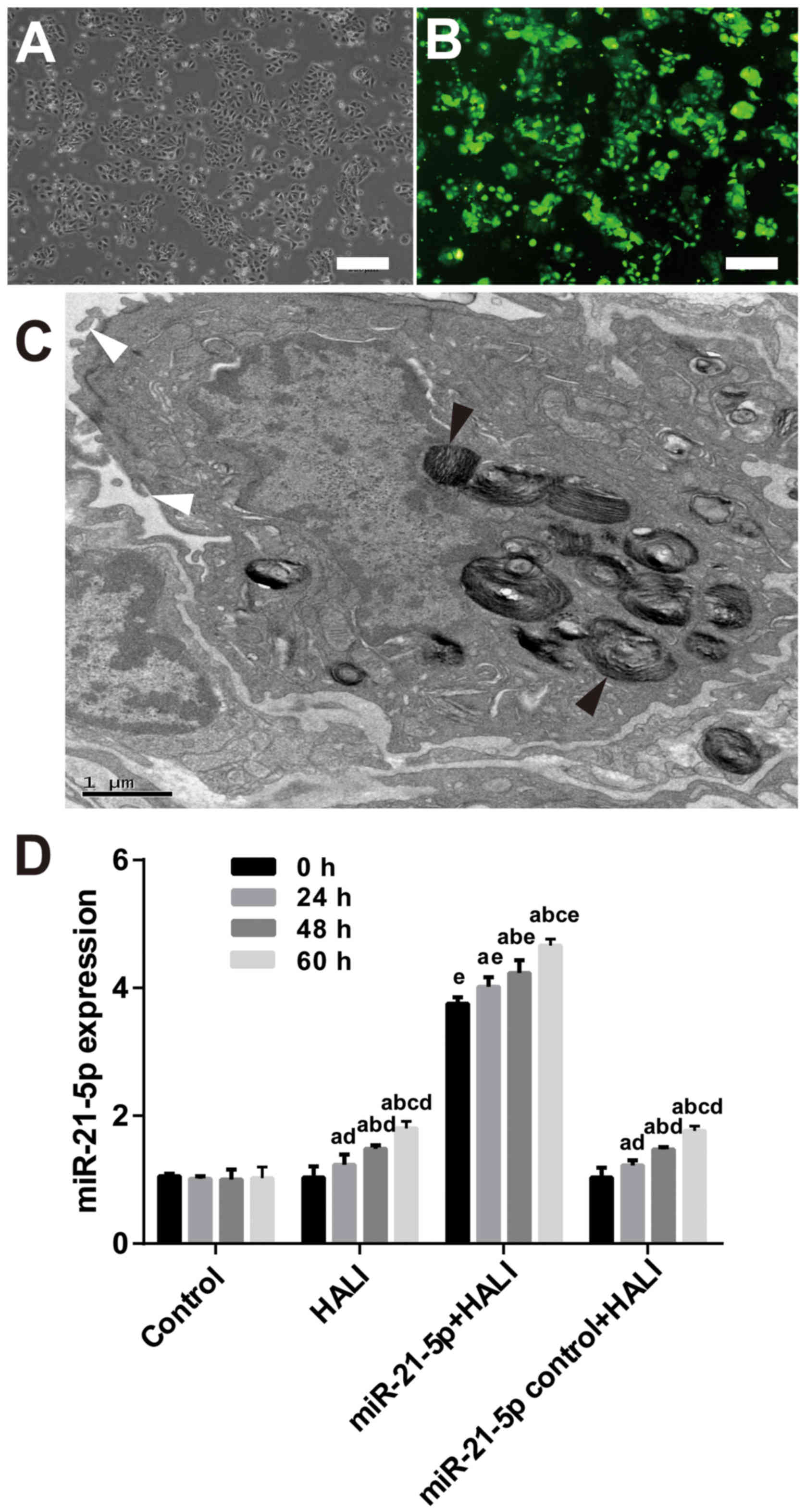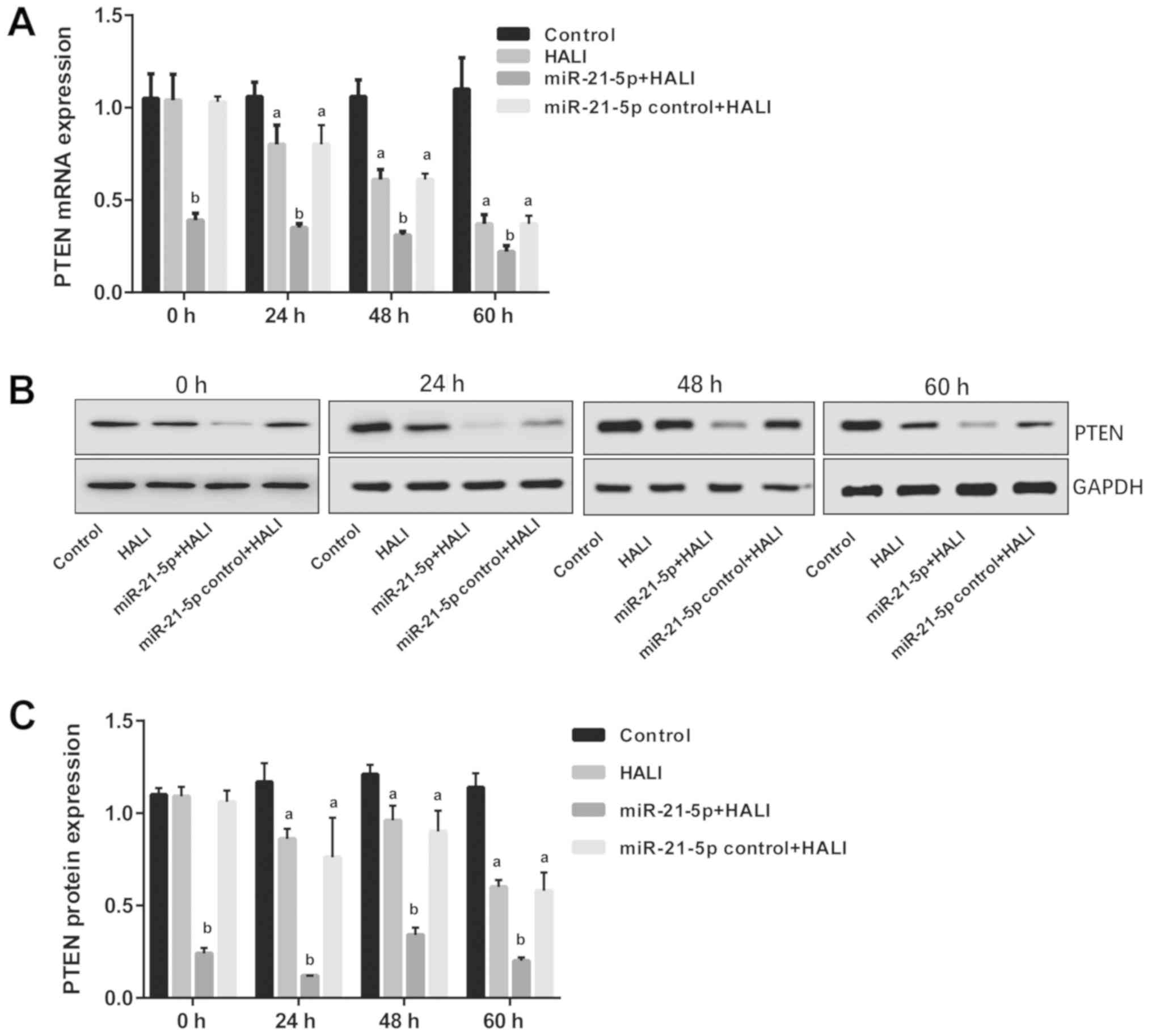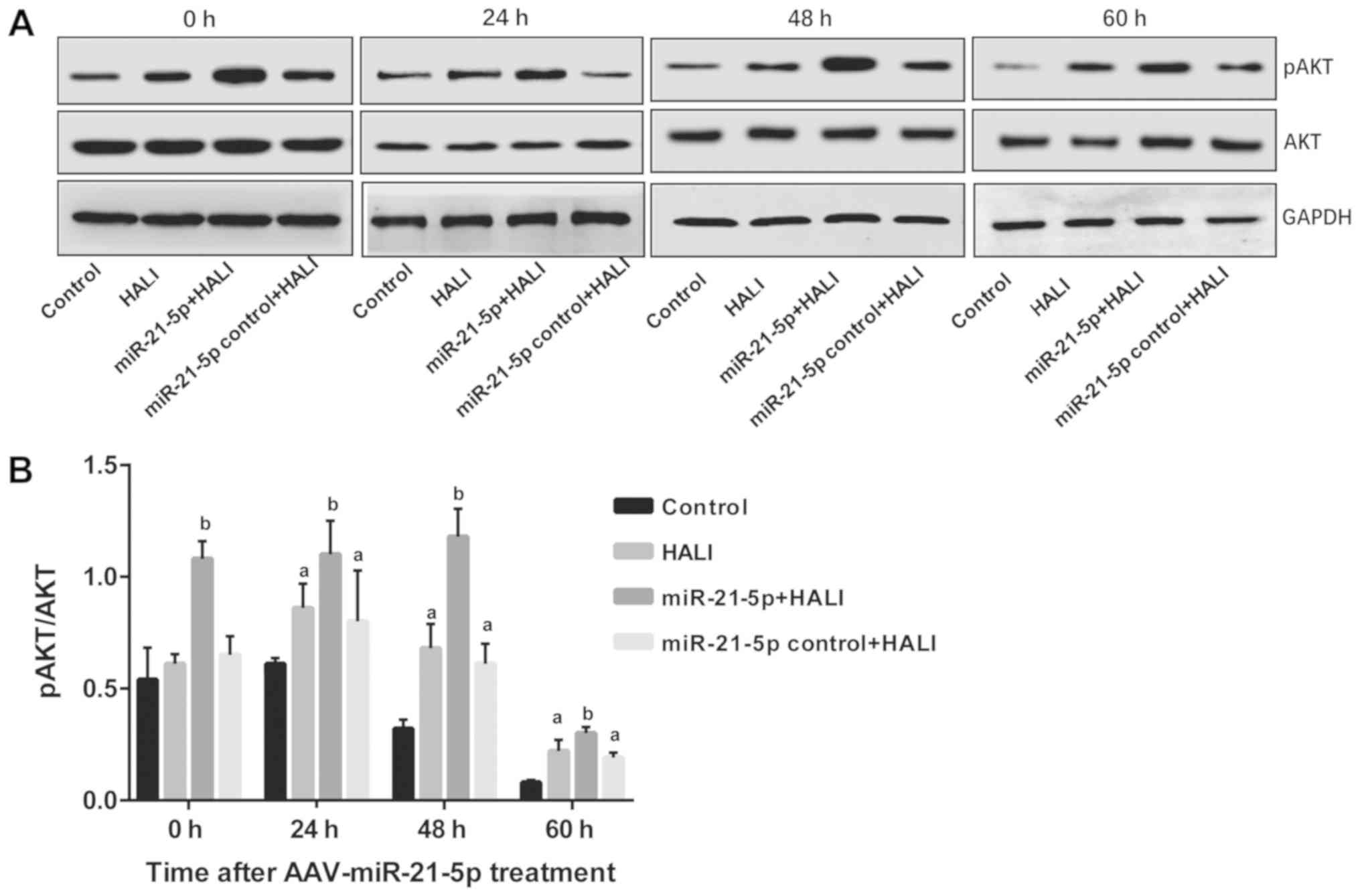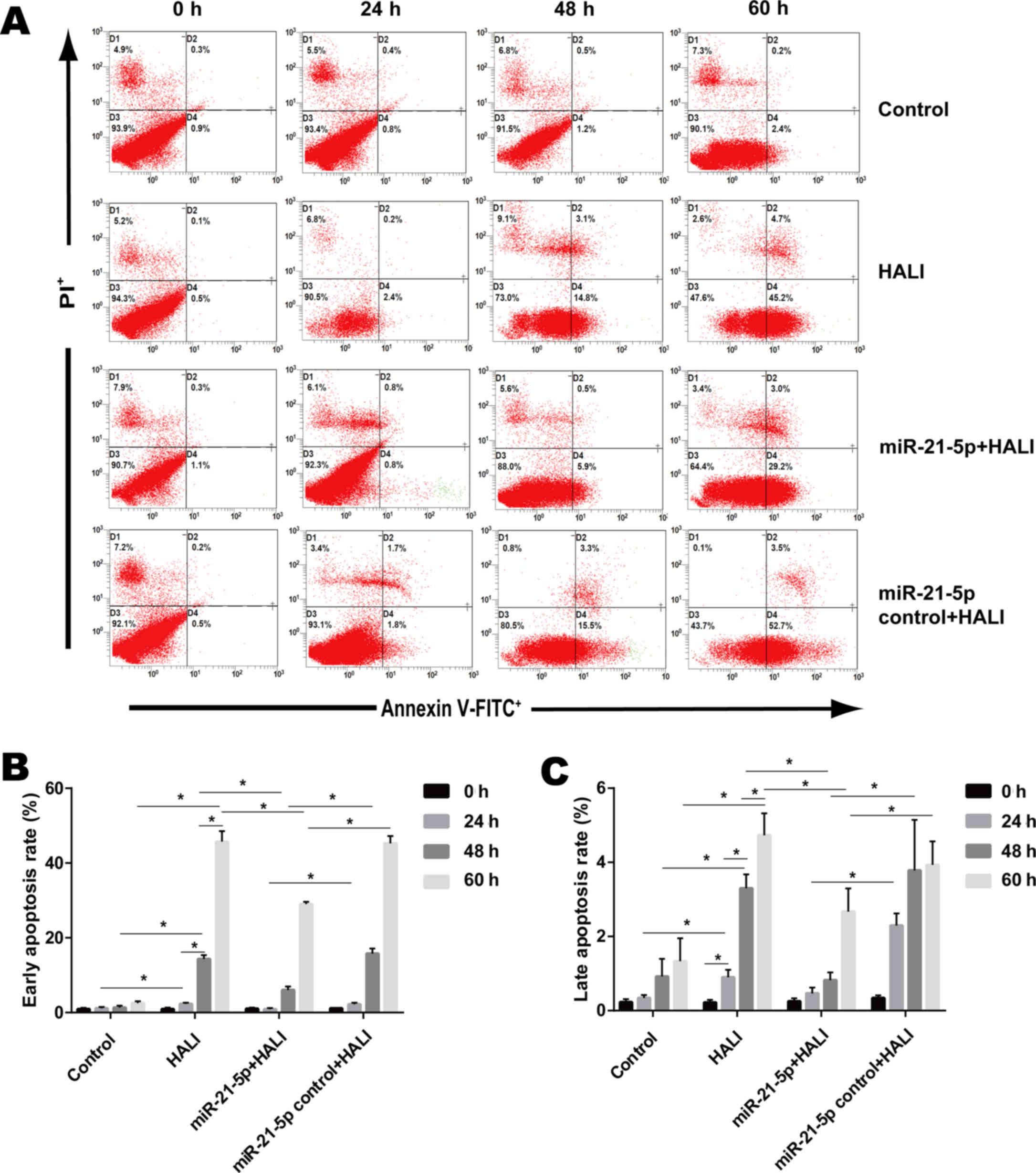|
1
|
Dos Santos CC: Hyperoxic acute lung injury
and ventilator-induced/associated lung injury: New insights into
intracellular signaling pathways. Crit Care. 11:1262007. View Article : Google Scholar : PubMed/NCBI
|
|
2
|
Nyp MF, Mabry SM, Navarro A, Menden H,
Perez RE, Sampath V and Ekekezie II: Lung epithelial-specific
TRIP-1 overexpression maintains epithelial integrity during
hyperoxia exposure. Physiol Rep. 6:e135852018. View Article : Google Scholar :
|
|
3
|
Budinger GR, Mutlu GM, Urich D, Soberanes
S, Buccellato LJ, Hawkins K, Chiarella SE, Radigan KA, Eisenbart J,
Agrawal H, et al: Epithelial cell death is an important contributor
to oxidant-mediated acute lung injury. Am J Respir Crit Care Med.
183:1043–1054. 2011. View Article : Google Scholar : PubMed/NCBI
|
|
4
|
Lee HS and Kim CK: Cathepsin B is
activated as an executive protease in fetal rat alveolar type II
cells exposed to hyperoxia. Exp Mol Med. 43:223–229. 2011.
View Article : Google Scholar : PubMed/NCBI
|
|
5
|
Kalluri R and Neilson EG:
Epithelial-mesenchymal transition and its implications for
fibrosis. J Clin Invest. 112:1776–1784. 2003. View Article : Google Scholar : PubMed/NCBI
|
|
6
|
Barazzone C, Horowitz S, Donati YR,
Rodriguez I and Piguet PF: Oxygen toxicity in mouse lung: Pathways
to cell death. Am J Respir Cell Mol Biol. 19:573–581. 1998.
View Article : Google Scholar : PubMed/NCBI
|
|
7
|
Lee HS and Kim CK: Effect of recombinant
IL-10 on cultured fetal rat alveolar type II cells exposed to
65%-hyperoxia. Respir Res. 12:682011. View Article : Google Scholar : PubMed/NCBI
|
|
8
|
Ma X, Xu D, Ai Y, Ming G and Zhao S: Fas
inhibition attenuates lipopolysaccharide-induced apoptosis and
cytokine release of rat type II alveolar epithelial cells. Mol Biol
Rep. 37:3051–3056. 2010. View Article : Google Scholar : PubMed/NCBI
|
|
9
|
Kamp DW, Liu G, Cheresh P, Kim SJ, Mueller
A, Lam AP, Trejo H, Williams D, Tulasiram S, Baker M, et al:
Asbestos-induced alveolar epithelial cell apoptosis. The role of
endoplasmic reticulum stress response. Am J Respir Cell Mol Biol.
49:892–901. 2013. View Article : Google Scholar : PubMed/NCBI
|
|
10
|
Liang X, Wei SQ, Lee SJ, Fung JK, Zhang M,
Tanaka A, Choi AM and Jin Y: P62 sequestosome 1/light Chain 3b
complex confers cytoprotection on lung epithelial cells after
hyperoxia. Am J Respir Cell Mol Biol. 48:489–496. 2013. View Article : Google Scholar : PubMed/NCBI
|
|
11
|
Hengartner MO: The biochemistry of
apoptosis. Nature. 407:770–776. 2000. View
Article : Google Scholar : PubMed/NCBI
|
|
12
|
Husari AW, Khayat A, Awdeh H, Hatoum H,
Nasser M, Mroueh SM, Zaatari G, El-Sabban M and Dbaibo GS:
Activated protein C attenuates acute lung injury and apoptosis in a
hyperoxic animal model. Shock. 33:467–472. 2010.PubMed/NCBI
|
|
13
|
Xu G, Zhang Y, Wei J, Jia W, Ge Z, Zhang Z
and Liu X: MicroRNA-21 promotes hepatocellular carcinoma HepG2 cell
proliferation through repression of mitogen-activated protein
kinase-kinase 3. BMC Cancer. 13:4692013. View Article : Google Scholar : PubMed/NCBI
|
|
14
|
Teng Y, Radde BN, Litchfield LM, Ivanova
MM, Prough RA, Clark BJ, Doll MA, Hein DW and Klinge CM:
Dehydroepiandrosterone activation of G-protein-coupled estrogen
receptor rapidly stimulates MicroRNA-21 transcription in human
hepatocellular carcinoma cells. J Biol Chem. 290:15799–15811. 2015.
View Article : Google Scholar : PubMed/NCBI
|
|
15
|
Dong S, Ma W, Hao B, Hu F, Yan L, Yan X,
Wang Y, Chen Z and Wang Z: MicroRNA-21 promotes cardiac fibrosis
and development of heart failure with preserved left ventricular
ejection fraction by up-regulating Bcl-2. Int J Clin Exp Pathol.
7:565–574. 2014.PubMed/NCBI
|
|
16
|
Richart A, Loyer X, Neri T, Howangyin K,
Guérin CL, Ngkelo A, Bakker W, Zlatanova I, Rouanet M, Vilar J, et
al: MicroRNA-21 coordinates human multipotent cardiovascular
progenitors therapeutic potential. Stem Cells. 32:2908–2922. 2014.
View Article : Google Scholar : PubMed/NCBI
|
|
17
|
Deng W, Wang Y, Long X, Zhao R, Wang Z,
Liu Z, Cao S and Shi B: miR-21 reduces hydrogen peroxide-induced
apoptosis in c-kit+ cardiac stem cells in vitro through
PTEN/PI3K/Akt signaling. Oxid Med Cell Longev. 2016:53891812016.
View Article : Google Scholar : PubMed/NCBI
|
|
18
|
Otsuka M, Kishikawa T, Yoshikawa T, Ohno
M, Takata A, Shibata C and Koike K: The role of microRNAs in
hepatocarcinogenesis: Current knowledge and future prospects. J
Gastroenterol. 49:173–184. 2014. View Article : Google Scholar : PubMed/NCBI
|
|
19
|
Yehya N, Yerrapureddy A, Tobias J and
Margulies SS: MicroRNA modulate alveolar epithelial response to
cyclic stretch. BMC Genomics. 13:1542012. View Article : Google Scholar : PubMed/NCBI
|
|
20
|
Li X, Mei ZJ, Wang YC, Chen J, Sun SX, Yau
Y, Li Z and Xie C: Antagonism of miR-21 reverses radiation-induced
EMT in alveolar epithelial cells via PI3K/Akt pathway. Int J Clin
Exp Pathol. 9:1158–1167. 2016.
|
|
21
|
Gomez IG, MacKenna DA, Johnson BG, Kaimal
V, Roach AM, Ren S, Nakagawa N, Xin C, Newitt R, Pandya S, et al:
Anti-microRNA-21 oligonucleotides prevent Alport nephropathy
progression by stimulating metabolic pathways. J Clin Invest.
125:141–156. 2015. View
Article : Google Scholar : PubMed/NCBI
|
|
22
|
Dong L, Wang X, Tan J, Li H, Qian W, Chen
J, Chen Q, Wang J, Xu W, Tao C and Wang S: Decreased expression of
microRNA-21 correlates with the imbalance of Th17 and Treg cells in
patients with rheumatoid arthritis. J Cell Mol Med. 18:2213–2224.
2014. View Article : Google Scholar : PubMed/NCBI
|
|
23
|
Qin S, Chen M, Ji H, Liu GY, Mei H, Li K
and Chen T: miR-21-5p regulates type II alveolar epithelial cell
apoptosis in hyperoxic acute lung injury. Mol Med Rep.
17:5796–5804. 2018.PubMed/NCBI
|
|
24
|
Qin S, Hui Y, Liu G, Mei H and Chen M:
miR-21-5p targets PTEN and reduces
H2O2-induced apoptosis in rat AECII cells.
Int J Clin Exp Med. 12:5630–5637. 2019.
|
|
25
|
Shi L, He Y, Bai B and Chen M: Effects of
microRNA-21 inhibitor on apoptosis of type II alveolar epithelial
cells in rats with hyperoxia-induced acute lung injury. Zhonghua
Wei Zhong Bing Ji Jiu Yi Xue. 29:244–248. 2017.(In Chinese).
PubMed/NCBI
|
|
26
|
Tang C, Gu Y, Wang H, Wu H, Wang Y, Meng
Y, Han Z, Gu Y, Ma W, Jiang Z, et al: Targeting of microRNA-21-5p
protects against seizure damage in a kainic acid-induced status
epilepticus model via PTEN-mTOR. Epilepsy Res. 144:34–42. 2018.
View Article : Google Scholar : PubMed/NCBI
|
|
27
|
Small EM, O'Rourke JR, Moresi V,
Sutherland LB, McAnally J, Gerard RD, Richardson JA and Olson EN:
Regulation of PI3-kinase/Akt signaling by muscle-enriched
microRNA-486. Proc Natl Acad Sci USA. 107:4218–4223. 2010.
View Article : Google Scholar : PubMed/NCBI
|
|
28
|
Poliseno L, Salmena L, Zhang J, Carver B,
Haveman WJ and Pandolfi PP: A coding-independent function of gene
and pseudogene mRNAs regulates tumour biology. Nature.
465:1033–1038. 2010. View Article : Google Scholar : PubMed/NCBI
|
|
29
|
Hao XJ, Xu CZ, Wang JT, Li XJ, Wang MM, Gu
YH and Liang ZG: miR-21 promotes proliferation and inhibits
apoptosis of hepatic stellate cells through targeting PTEN/PI3K/AKT
pathway. J Recept Signal Transduct Res. 38:455–461. 2018.
View Article : Google Scholar : PubMed/NCBI
|
|
30
|
Liu G, Mei H, Chen M, Qin S, Li K, Zhang W
and Chen T: Protective effect of agmatine against hyperoxia-induced
acute lung injury via regulating lncRNA gadd7. Biochem Biophys Res
Commun. 13:68–74. 2019. View Article : Google Scholar
|
|
31
|
Matute-Bello G, Downey G, Moore BB,
Groshong SD, Matthay MA, Slutsky AS and Kuebler WM; Acute Lung
Injury in Animals Study Group, : An official american thoracic
society workshop report: Features and measurements of experimental
acute lung injury in animals. Am J Respir Cell Mol Biol.
44:725–738. 2011. View Article : Google Scholar : PubMed/NCBI
|
|
32
|
Lin J, Tian J, Wang L, Wu W, Li H, Wang X,
Zeng X and Zhang W: Apoptosis and surfactant protein-C expression
inhibition induced by lipopolysaccharide in AEC II cell may
associate with NF-κB pathway. J Toxicol Sci. 42:53–61. 2017.
View Article : Google Scholar : PubMed/NCBI
|
|
33
|
Livak KJ and Schmittgen TD: Analysis of
relative gene expression data using real-time quantitative PCR and
the 2(-Delta Delta C(T)) method. Methods. 25:402–408. 2001.
View Article : Google Scholar : PubMed/NCBI
|
|
34
|
Cao S, Xiao Z, Sun M and Li Y: D-serine in
the midbrain periaqueductal gray contributes to morphine tolerance
in rats. Mol Pain. 12(pii): 17448069166467862016.PubMed/NCBI
|
|
35
|
Cao S, Li Q, Hou J, Li Z, Cao X, Liu X and
Qin B: Intrathecal TRPM8 blocking attenuates cold hyperalgesia via
PKC and NF-κB signaling in the dorsal root ganglion of rats with
neuropathic pain. J Pain Res. 12:1287–1296. 2019. View Article : Google Scholar : PubMed/NCBI
|
|
36
|
Ou H, Li Y and Kang M: Activation of
miR-21 by STAT3 induces proliferation and suppresses apoptosis in
nasopharyngeal carcinoma by targeting PTEN gene. PLoS One.
9:e1099292014. View Article : Google Scholar : PubMed/NCBI
|
|
37
|
Fang L, Wang X, Sun Q, Papakonstantinou E,
S'ng C, Tamm M, Stolz D and Roth M: IgE downregulates PTEN through
microRNA-21-5p and stimulates airway smooth muscle cell remodeling.
Int J Mol Sci. 20(pii): E8752019. View Article : Google Scholar : PubMed/NCBI
|
|
38
|
Meng F, Henson R, Lang M, Wehbe H,
Maheshwari S, Mendell JT, Jiang J, Schmittgen TD and Patel T:
Involvement of human micro-RNA in growth and response to
chemotherapy in human cholangiocarcinoma cell lines.
Gastroenterology. 130:2113–2129. 2006. View Article : Google Scholar : PubMed/NCBI
|
|
39
|
Meng F, Henson R, Wehbe-Janek H, Ghoshal
K, Jacob ST and Patel T: MicroRNA-21 regulates expression of the
PTEN tumor suppressor gene in human hepatocellular cancer.
Gastroenterology. 133:647–658. 2007. View Article : Google Scholar : PubMed/NCBI
|
|
40
|
Li JW, Wei L, Han Z and Chen Z:
Mesenchymal stromal cells-derived exosomes alleviate
ischemia/reperfusion injury in mouse lung by transporting
anti-apoptotic miR-21-5p. Eur J Pharmacol. 852:68–76. 2019.
View Article : Google Scholar : PubMed/NCBI
|
|
41
|
Hu M, Zhu S, Xiong S, Xue X and Zhou X:
MicroRNAs and the PTEN/PI3K/Akt pathway in gastric cancer (Review).
Oncol Rep. 41:1439–1454. 2019.PubMed/NCBI
|
|
42
|
Matsuda S, Nakagawa Y, Kitagishi Y,
Nakanishi A and Murai T: Reactive oxygen species, superoxide
dimutases, and PTEN-p53-AKT-MDM2 signaling loop network in
mesenchymal stem/stromal cells regulation. Cells. 7(pii): E362018.
View Article : Google Scholar : PubMed/NCBI
|
|
43
|
Gao X, Qin T, Mao J, Zhang J, Fan S, Lu Y,
Sun Z, Zhang Q, Song B and Li L: PTENP1/miR-20a/PTEN axis
contributes to breast cancer progression by regulating PTEN via
PI3K/AKT pathway. J Exp Clin Cancer Res. 38:2562019. View Article : Google Scholar : PubMed/NCBI
|
|
44
|
Carnero A, Blanco-Aparicio C, Renner O,
Link W and Leal JF: The PTEN/PI3K/AKT signalling pathway in cancer,
therapeutic implications. Curr Cancer Drug Targets. 8:187–198.
2008. View Article : Google Scholar : PubMed/NCBI
|
|
45
|
Ren W, Hou J, Yang C, Wang H, Wu S, Wu Y,
Zhao X and Lu C: Extracellular vesicles secreted by hypoxia
pre-challenged mesenchymal stem cells promote non-small cell lung
cancer cell growth and mobility as well as macrophage M2
polarization via miR-21-5p delivery. J Exp Clin Cancer Res.
38:622019. View Article : Google Scholar : PubMed/NCBI
|
|
46
|
Yan L, Cao R, Liu Y, Wang L, Pan B, Lv X,
Jiao H, Zhuang Q, Sun X and Xiao R: miR-21-5p links
epithelial-mesenchymal transition phenotype with stem-like cell
signatures via AKT signaling in keloid keratinocytes. Sci Rep.
6:282812016. View Article : Google Scholar : PubMed/NCBI
|
|
47
|
Devaney J, Contreras M and Laffey JG:
Clinical review: Gene-based therapies for ALI/ARDS: Where are we
now? Crit Care. 15:2242011. View Article : Google Scholar : PubMed/NCBI
|
|
48
|
MacLoughlin RJ, Higgins BD, Laffey JG and
O'Brien T: Optimized aerosol delivery to a mechanically ventilated
rodent. J Aerosol Med Pulm Drug Deliv. 22:323–332. 2009. View Article : Google Scholar : PubMed/NCBI
|
|
49
|
Suen CM, Mei SH, Kugathasan L and Stewart
DJ: Targeted delivery of genes to endothelial cells and cell- and
gene-based therapy in pulmonary vascular diseases. Compr Physiol.
3:1749–1779. 2013. View Article : Google Scholar : PubMed/NCBI
|















